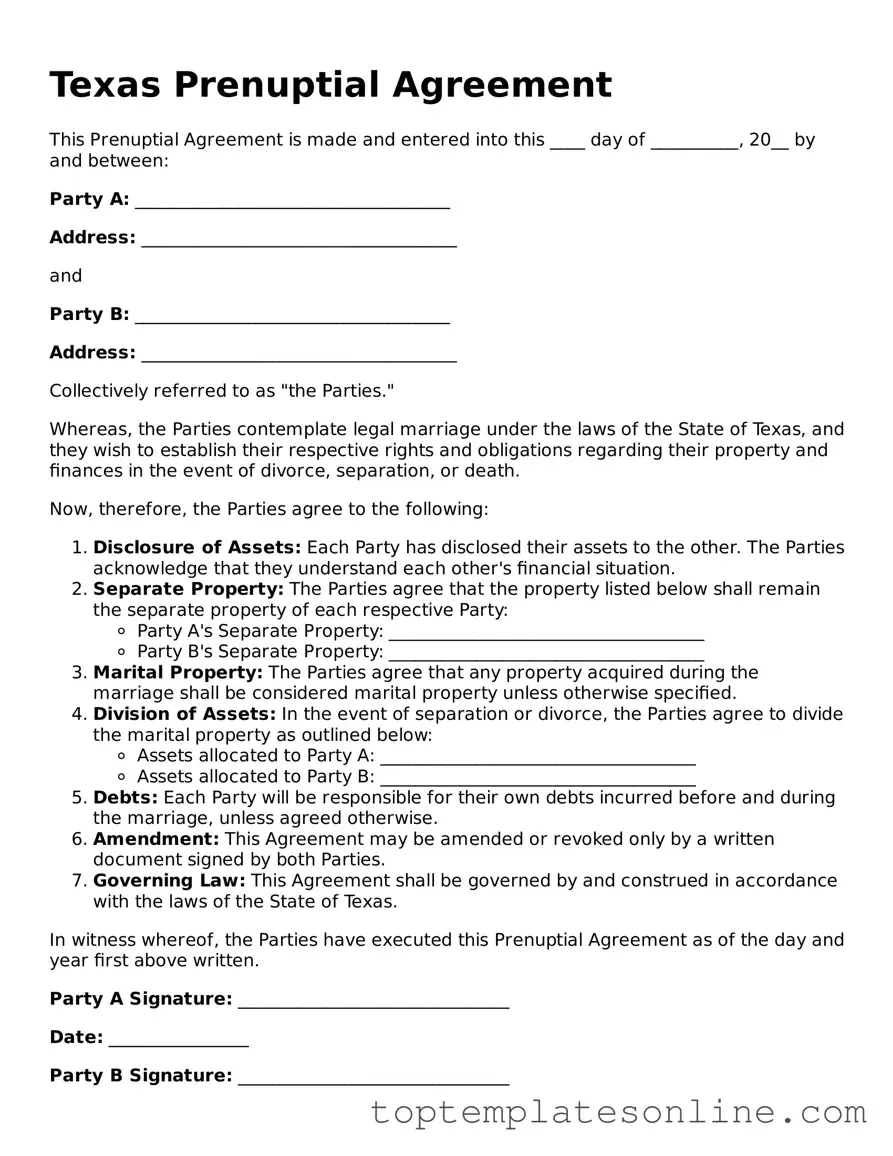Blank Prenuptial Agreement Template for Texas State
A Texas Prenuptial Agreement form is a legal document that outlines the division of assets and responsibilities in the event of a divorce or separation. This agreement helps couples clarify their financial rights and obligations before entering into marriage. By establishing clear terms, both parties can protect their interests and reduce potential conflicts in the future.
Customize Prenuptial Agreement Here
